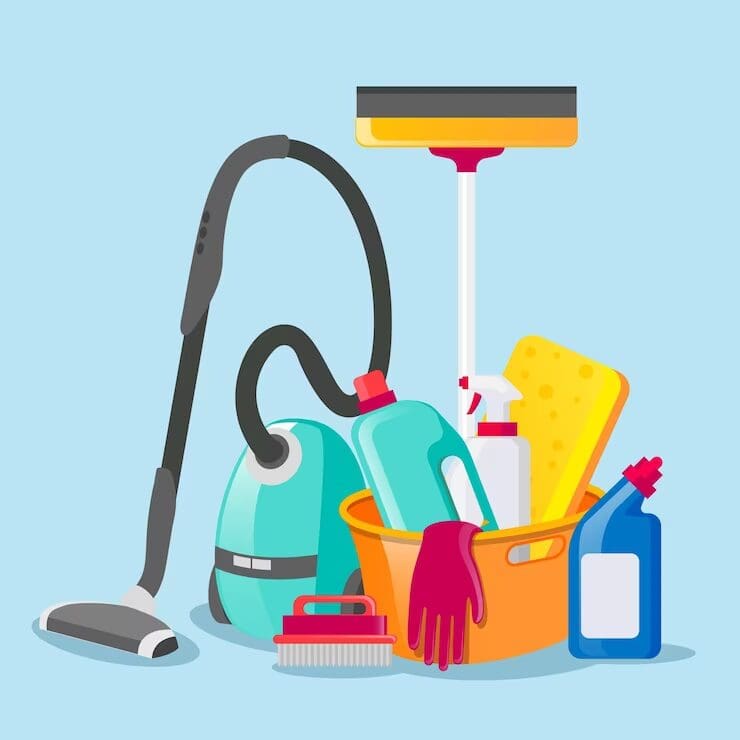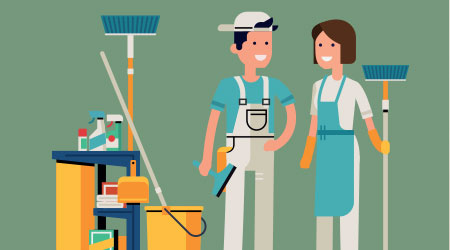How to Master Everyday Cleaning: Tips for Effective Defrosted and Cleaned Every Few Months and Decluttering
How to Master Everyday Cleaning: Tips for Effective Defrosted and Cleaned Every Few Months and Decluttering
Blog Article
Comprehending the Requirement for Thoroughly Disinfecting and Sanitizing Often Touched Surfaces in High-Traffic Areas
In the realm of public wellness and safety and security, the meticulous sanitation and sanitization of regularly touched surface areas in high-traffic areas stand as critical measures in preventing the spread of damaging virus. The relevance of this practice expands far beyond mere tidiness, diving into the world of condition prevention and neighborhood wellness. By discovering the numerous aspects of surface disinfection, from the risks connected with neglecting cleansing protocols to the effective techniques that can be used, a more clear understanding emerges of the essential function these practices play in guarding public health and wellness. As we navigate this conversation, it becomes obvious that the implications of comprehensive surface area disinfection resound not only within the boundaries of a specific setting but additionally resonate on a wider range, affecting the health and wellness of people across diverse public settings.
Importance of Surface Area Disinfection
Emphasizing the complete sanitation of high-traffic surface areas is crucial in maintaining a hygienic environment and avoiding the spread of damaging microorganisms. High-touch surfaces such as door deals with, light switches, elevator buttons, and countertops act as reproducing premises for infections and microorganisms. Normal sanitation of these surfaces is necessary to lower the danger of contamination and transmission of health problems.
By carrying out a robust disinfection method, organizations and companies can create a more secure setting for consumers, site visitors, and employees. Appropriate surface sanitation not only mitigates the spread of contagious diseases yet likewise instills self-confidence in the cleanliness and safety and security of the facilities. This proactive strategy demonstrates a commitment to health and wellness and health, which is particularly important in high-traffic areas where the likelihood of direct exposure to virus is enhanced.
Additionally, surface sanitation plays a vital role in general infection control strategies. Integrated with hand health practices, using masks, and keeping physical distancing, complete sanitation of high-touch surfaces develops a thorough defense against the transmission of dangerous microorganisms. Prioritizing surface area sanitation is an important element of an all natural approach to health and wellness in common spaces.
Dangers of Neglecting Cleaning Practices
Overlooking complete sanitation of high-traffic surface areas significantly heightens the danger of bacterial and viral contamination, presenting a significant threat to the health and wellness of individuals frequenting these spaces. Failure to execute proper cleaning practices can lead to the accumulation and spread of damaging microorganisms, including viruses and bacteria, on frequently touched surfaces such as doorknobs, hand rails, lift switches, and counter tops.

Furthermore, overlooking the value of complete cleansing not only endangers the well-being of individuals yet also weakens initiatives to maintain a sanitary and tidy environment. It is vital to recognize the importance of appropriate sanitation protocols in stopping the spread of infections and guarding public health.
Reliable Sanitation Methods
To preserve ideal sanitation and lower the danger of contamination on high-traffic surface areas, using effective disinfection methods is vital. Among one of the most reliable and usual sanitation approaches is using chemical anti-bacterials. These items can differ in strength and composition, with some targeting specific pathogens like bacteria or viruses. It is essential to follow the manufacturer's instructions for proper dilution, contact time, and air flow when making use of chemical anti-bacterials to guarantee their efficiency - Clear Out Any Clutter.
One more effective approach is using UV-C light. UV-C light has been revealed to be effective in killing a large selection of microbes by interrupting their DNA structure, hence avoiding them from replicating. It is necessary to utilize UV-C light correctly, making sure that the appropriate strength and exposure time are used to accomplish the desired sanitation results.
Furthermore, utilizing heavy steam cleaning as a disinfection technique can be extremely efficient, particularly on surface areas that are heat-resistant. Heavy steam can permeate porous surfaces and kill bacteria, defrosted and cleaned every few months infections, and various other virus properly. When making use of vapor cleansing, it is important to ensure that the surface area gets to the needed temperature for a sufficient amount of time to assure correct sanitation.
Effect On Public Health And Wellness
The upkeep of high requirements of sanitation and disinfection on high-traffic surface areas plays an important role in securing public wellness. Frequently touched surface areas in locations with high footfall, such as doorknobs, hand rails, lift buttons, and bathroom centers, serve as breeding premises for harmful microorganisms.
In high-traffic areas like airport terminals, colleges, medical facilities, and public transportation systems, the influence of extensive disinfection actions can not be downplayed. Prioritizing the sanitization of regularly touched surfaces is an aggressive technique to promoting public wellness and enhancing the safety and security of individuals in shared rooms.
Applying Normal Cleaning Up Protocols
Quickly setting up and adhering to a regular schedule of cleansing protocols is vital for maintaining the tidiness and safety and security of high-traffic surfaces. Normal cleaning procedures are essential in protecting against the accumulation of bacteria and pathogens on often touched surface areas, especially in areas with high foot website traffic. By implementing an organized approach to cleaning, companies can effectively minimize the threat of disease transmission and produce a much healthier environment for workers, consumers, and the public.
To establish a reliable cleaning routine, it is crucial to determine high-traffic locations that need constant attention. These areas might consist of doorknobs, handrails, lift switches, washroom centers, and shared tools. Carrying out a routine cleansing routine that targets these surface areas multiple times a day can substantially lower the spread of harmful bacteria and viruses.
Furthermore, using suitable cleansing representatives and anti-bacterials is crucial to making certain that surface areas are extensively disinfected. Normal training of cleansing team on correct cleansing strategies and the relevance of adherence to the cleansing timetable is additionally vital in maintaining a hygienic atmosphere. By focusing on constant cleansing protocols, organizations can promote the health and well-being of people that engage with these high-traffic surface areas.

Final Thought
Finally, it is crucial to prioritize detailed sanitation and sanitization of regularly touched surface areas in high-traffic locations to stop the spread of hazardous microorganisms and preserve public health. Overlooking appropriate cleaning practices can enhance the risk of contamination and transmission of diseases. By executing regular cleaning protocols and using effective sanitation approaches, we can develop a much safer atmosphere for everybody (Vacuum Carpets). It is critical to identify the relevance of preserving clean surface areas in high-traffic locations to make sure the wellness of the community.
In the realm of public other health and security, the precise sanitation and sanitization of often touched surfaces in high-traffic locations stand as critical actions in stopping the spread of hazardous virus. By checking out the numerous aspects of surface area sanitation, from the risks connected with neglecting cleansing protocols to the efficient methods that can be used, a clearer understanding arises of the vital function these techniques play in securing public health.Furthermore, using steam cleansing as a sanitation method can be extremely effective, particularly on surface areas that are heat-resistant. When using important site heavy steam cleansing, it is important to guarantee that the surface area gets to the required temperature for an enough quantity of time to guarantee appropriate sanitation.
In verdict, it is essential to prioritize detailed disinfection and sanitization of frequently touched surfaces in high-traffic locations to protect against the spread of hazardous microorganisms and keep public wellness.
Report this page